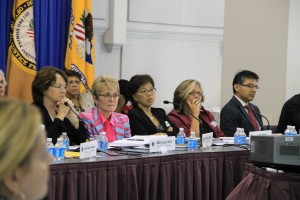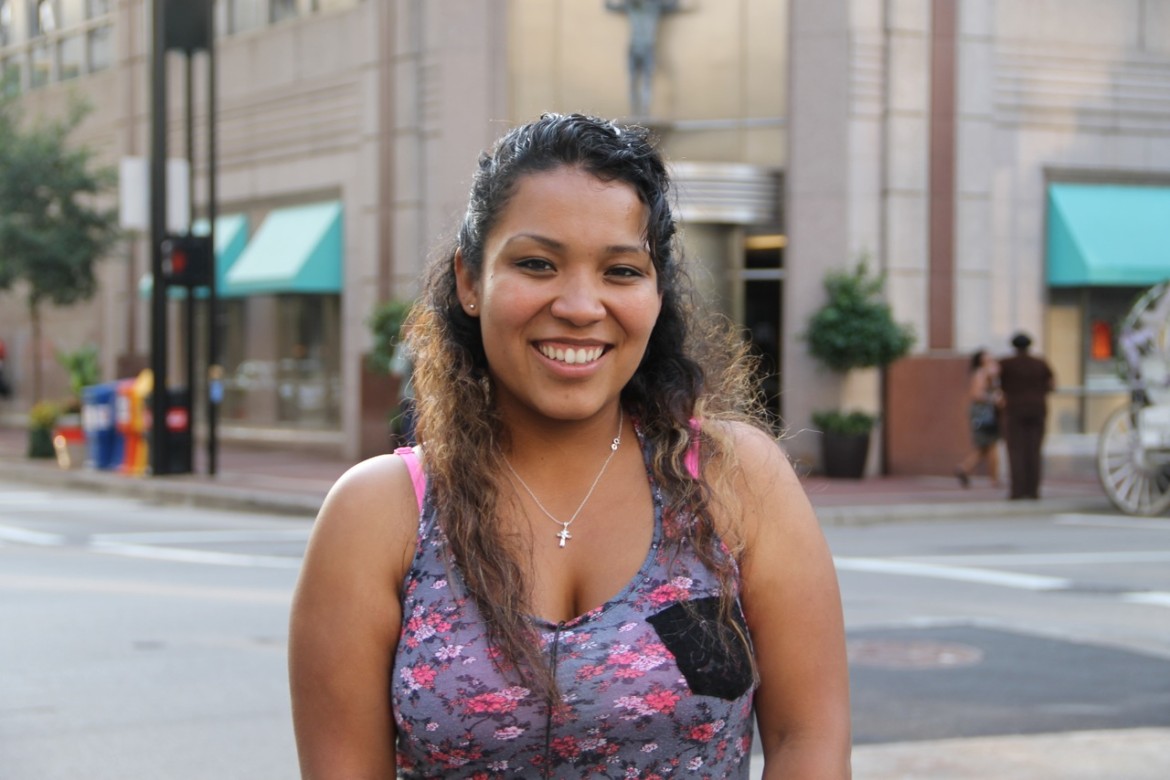
Crystal Contreras, who served five years in a juvenile justice facility in California, is now studying sociology in college and volunteering with foster kids.
When Crystal Contreras was seven and living in Los Angeles, her mother put her in the care of someone Contreras saw as a father figure. Instead, he pressured the little girl for sex. For the next three years, until she was 10, the man raped her regularly, often creeping into the house at night without her mother’s knowledge.
“I never said nothing to my mom,” Contreras told JJIE.org during an interview in July. “I was scared he would kill her or hurt her or hurt the animals that I had. I felt like I was protecting her. But what I did – I started acting out.”
Contreras, now 21 and in college, completed a five-year term at a juvenile detention facility in California last year, she said. Her history of sexual trauma echoes the stories of tens of thousands of girls who find themselves in the juvenile justice system, a history that advocates and professionals in the field say the states and federal government must take into account when designing rehabilitation programs to meet girls’ needs.
While the number of girls who had contact with the juvenile justice system in 2010 equaled only about 40 percent of the number of boys, girls are more likely to be detained for minor offenses related to their underage status, like truancy or running away, according to a report released Tuesday by the Georgetown Center on Poverty, Inequality and Public Policy. Less than 10 percent of juvenile arrests for violent crimes involved girls, the report said.
“Overall, the juvenile justice system is ill-equipped to serve girls effectively, having failed to implement the reforms called for by a growing body of research on the needs of the girls in its care,” said the report, “Improving the Juvenile Justice System for Girls: Lessons from the States.”
Malika Saar, executive director of the Human Rights Project for Girls, told an interagency gathering of federal officials in Washington, D.C., last month that the so-called school-to-prison pipeline applies mainly to boys. For girls, Saar said, the biggest funnel into the prison system is sexual abuse.
Liz Watson, a co-author of the Georgetown report, echoed Saar’s description.
“What really stands out about girls’ particular pathway into the system is that very often, the girls are in the system for things like running away and truancy, and sometimes, being picked up for prostitution, which is really exploitation for these girls,” Watson said. “So the reasons they get into the system are gender bias and exploitation and abuse.”
To add insult to injury, she said, “Once they’re there, girls have harsher penalties than boys for status offenses.”

Acting Asst. Attorney General Mary Lou Leary (left) and Acting Administrator of the OJJDP Melodee Hanes (second to left) listen to testimony from formerly incarcerated women and their advocates about the experience of girls in the juvenile justice system during the quarterly meeting of the federal interagency Coordinating Council for Juvenile Justice and Delinquency Prevention last month.
Withelma "T" Ortiz Walker Pettigrew, 23, testified about her detention experiences in California and Nevada before a federal interagency committee, the Coordinating Council of Juvenile Justice and Delinquency Prevention, in Washington, D.C., in September.
The council, an independent body created under the authority of the federal Juvenile Justice and Delinquency Prevention Act of 1974, meets quarterly to coordinate the program efforts of federal government agencies. It includes cabinet members from the departments of Labor, Health, Housing and Urban Development, Education and Homeland Security.
Last month marked the first time since 2000 that the council had met to discuss the issue of girls in the juvenile justice system. The meeting 12 years ago led the U.S. Department of Justice to create the National Girls Study Group, a multi-year research effort into strategies for keeping girls from entering the system, Melodee Hanes, the acting administrator for Office of Juvenile Justice and Delinquency Prevention, told the council.
Another outcome of the 2000 meeting was the creation of the National Girls Institute within the federal juvenile justice office in the U.S. Department of Justice, a clearinghouse for research and technical assistance, Hanes said. The institute recently released its own findings from a series of national “listening sessions” with girls in the system, their families and other stakeholders.
Although most cabinet-level members were not present at September’s meeting, their agency representatives listened intently as field professionals and women who had been incarcerated as girls testified about their experiences with the system.
Pettigrew told the council she was trafficked as a minor, coerced into sex and kept captive.
“I was sent to the juvenile justice system for a crime that technically, according to the law, I did not have the ability or consent to commit,” Pettigrew said. “I was a victim of child abuse but I was the one put behind bars.”
Watson calls girls like Pettigrew and Contreras “the walking wounded” who are often re-traumatized in detention. Despite her history of sexual abuse, Pettigrew found herself in a facility with no doors on the showers or the toilets, and male staff members to watch the girls. The lack of doors in showers and toilets comes up regularly in descriptions of facilities by advocates and girls.

Withelma Ortiz Walker Pettigrew (center) speaking about her experience in the juvenile justice system in front of the federal interagency Coordinating Council for Juvenile Justice and Delinquency Prevention in Washington D.C. last month. She hopes to attend college in D.C.
“Understanding the pathway for girls, and really the history of exploitation and abuse, is key to being able to undertake reform efforts that are really responsive to girls’ needs,” Watson told JJIE.org.
The Georgetown report came out of a meeting of experts and professionals last year where, Watson said, few knew of innovations by states other than their own. “It’s extremely important that states that are interested in reforms have the examples of other states to work on so they’re not re-creating the wheel,” Watson said.
The report outlines reform efforts by Connecticut, Florida and one California county, and offers recommendations for the federal government that echo those presented to the coordinating council by Pettigrew and other advocates.
The federal government must fund research and evaluation of girls’ programs, improve the assessment and data collection tools available for girls, and encourage states to develop programs that are geared toward girls’ particular needs and that take into account their history of sexual trauma, trafficking and exploitation, they say.
Back in Los Angeles, Contreras is now taking college sociology courses, working for a major health care organization and volunteering at a program for foster youth. During her last couple of years in detention, she said, she realized she had to take care of herself if she wanted to succeed.
Pettigrew is applying to undergraduate programs and trying to collect funds for college. It’s hard sharing her story in a roomful of people, she said, especially when few share her history. But she needs to do it, she said, so more people can understand what it’s like to be a girl in the system.
Photos by Kaukab Jhumra Smith

I am a former case manager in mental health, and saw this all the time. One of the problems is that Community Based services is cut many times, and has never bounced back since around 2005, in my opinion, and we had great teams which went out from Cobb County into homes that made a difference. Each of these young people need a team approach to work on trauma issues, a therapist, a support for parents, and intervention in failing schools. These teams did not operate in all counties due to funding. However, they do work. Building natural supports in the community liaising with churches, YMCA’s, DFACS, schools, and utilizing what is out there, but coordinated in a client-centered way is what works. I fought for better evaluations, reading programs, called churches for supplies, managed grant money for camps, and advocated in IEP meetings for clients, and the therapists worked with the child one/one in the home as I taught parents skills. This is needed so badly everywhere.
Hi Libby, I’m interested in creating the very kind of community services that you’ve described. I too believe that communities all over need to be strengthened with a team approach,for reasons like this. If you have the time I’d like to touch base with you. My email address is shekiramcknight@yahoo.com. HOPE TO HEAR FROM YOU SOON!